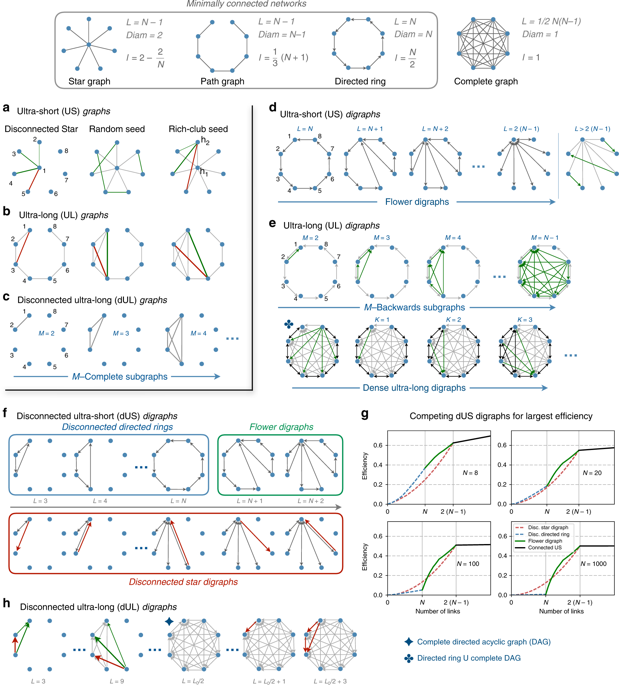Communications Physics ( IF 5.4 ) Pub Date : 2019-11-14 , DOI: 10.1038/s42005-019-0239-0 Gorka Zamora-López , Romain Brasselet

|
Among the many features of natural and man-made complex networks the small-world phenomenon is a relevant and popular one. But, how small is a small-world network and how does it compare to others? Despite its importance, a reliable and comparable quantification of the average pathlength of networks has remained an open challenge over the years. Here, we uncover the upper (ultra-long (UL)) and the lower (ultra-short (US)) limits for the pathlength and efficiency of networks. These results allow us to frame their length under a natural reference and to provide a synoptic representation, without the need to rely on the choice for a null-model (e.g., random graphs or ring lattices). Application to empirical examples of three categories (neural, social and transportation) shows that, while most real networks display a pathlength comparable to that of random graphs, when contrasted against the boundaries, only the cortical connectomes prove to be ultra-short.
中文翻译:

调整复杂的网络
在自然和人为复杂网络的许多特征中,小世界现象是一种相关且流行的现象。但是,小世界网络有多小?与其他网络相比又有何不同?尽管它很重要,但多年来,对网络平均路径长度进行可靠且可比较的量化仍然是一个开放的挑战。在这里,我们揭示了网络的路径长度和效率的上限(超长(UL))和下限(超短(US))。这些结果使我们能够在自然参考下确定其长度并提供概要表示,而无需依赖于空模型(例如,随机图或环形格)的选择。运用到三个类别(神经,社会和交通)的经验示例中,可以发现,











































 京公网安备 11010802027423号
京公网安备 11010802027423号